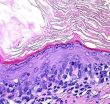(Press-News.org) This news release is available in German.
To date, antidotes exist for only a very few drugs. When treating overdoses, doctors are often limited to supportive therapy such as induced vomiting. Treatment is especially difficult if there is a combination of drugs involved. So what can be done if a child is playing and accidentally swallows his grandmother's pills? ETH professor Jean-Christophe Leroux from the Institute of Pharmaceutical Sciences at ETH Zurich wanted to find an answer to this question. "The task was to develop an agent that could eliminate many different toxic substances from the body as quickly as possible," he says.
Leroux and his team knew that lipid emulsions can bind to drugs when injected into the blood stream. The researchers pursued this approach in their own studies, developing an agent based on liposomes, which are tiny bubbles with a lipid membrane as an outer layer. Instead of an intravenous injection, the agent is used as a dialysis fluid for so-called peritoneal dialysis. This method of dialysis is less common than haemodialysis, which is mainly used as a long-term form of treatment of kidney failure.
"Washing" toxic substances out of the body
In the case of haemodialysis, the blood is "washed" in a machine at the hospital, whereas peritoneal dialysis involves eliminating toxic substances from within the body. The peritoneum serves as a dialysis membrane. The dialysis fluid is passed through a catheter into the abdominal cavity where it rids the body of toxins through the highly perfused peritoneum. In the case of the new dialysis liquid developed by the ETH researchers, the toxic compounds find their way into the core of the liposomes. Once the solution is loaded with toxins, it is drained out of the abdominal cavity through the catheter. The researchers were able to demonstrate that the new agent is especially effective at this. "Our peritoneal dialysis fluid can extract up to a hundred times more toxins than conventional alternatives," reported the ETH professor.
Their efforts are based on the principle that peritoneal dialysis is an especially attractive method for the emergency treatment of overdoses. Unlike haemodialysis, it does not require sophisticated equipment and can even be employed away from specialized hospitals.
New applications for peritoneal dialysis
Until now, however, peritoneal dialysis has only filled a specific niche. No more than 10 percent of all dialysis patients worldwide use this method, and it is almost never used for overdoses. One reason for this is that cleaning the blood using peritoneal dialysis and currently available dialysis agents has often been less effective than haemodialysis. Secondly, there is a greater risk of infection. The catheter insertion point can become inflamed, and bacteria can infiltrate the abdominal cavity through this opening. Doctors therefore opt for peritoneal dialysis only for a minority of patients whose blood needs to be cleaned due to renal failure caused by toxic metabolic products.
The findings of the ETH researchers may help to discover new applications for peritoneal dialysis in two respects: in the course of their research, Leroux and his team were pleased to find that their dialysis fluid rids the body of both drug residues as well as toxic metabolic products.
Treatment of serious liver diseases
The researchers' findings are especially promising for treating serious liver disease. Leroux has no doubt that there is a need for this because in addition to hepatitis and severe alcoholism, being overweight or obese can lead to liver disease. Given that obesity rates are constantly increasing in the western world, this is quite literally becoming a weightier issue all the time.
The dialysis fluid appears to be especially effective for liver diseases involving the accumulation of ammonia in the blood. Experiments in rats have shown that the substance effectively eliminates toxic ammonia. For example, it might be possible to provide effective emergency aid to infants who are born with metabolic disorders such as urea cycle disorder. "If a baby is not treated within a few hours of birth, there is already a hazard of irreparable brain damage," explains Leroux. Peritoneal dialysis is well-suited for newborns, because venous access for haemodialysis is difficult and there is a high risk of thrombosis.
Following these promising findings, Jean-Christophe Leroux's team now hopes to further develop the agent for actual medical applications. If everything goes as planned, the first clinical trials will be possible within the next five years.
INFORMATION:
Reference
Foster V, Signorell RD, Roveri M, Leroux JC: Liposome-supported peritoneal dialysis for detoxification of drugs and edogenous metabolites. Science Translational Medicine 2014. 6: 258ra141, doi: 10.1126/scitranslmed.3009135
Emergency aid for overdoses
2014-10-17
ELSE PRESS RELEASES FROM THIS DATE:
How the brain leads us to believe we have sharp vision
2014-10-17
Its central finding is that our nervous system uses past visual experiences to predict how blurred objects would look in sharp detail.
"In our study we are dealing with the question of why we believe that we see the world uniformly detailed," says Dr. Arvid Herwig from the Neuro-Cognitive Psychology research group of the Faculty of Psychology and Sports Science. The group is also affiliated to the Cluster of Excellence Cognitive Interaction Technology (CITEC) of Bielefeld University and is led by Professor Dr. Werner X. Schneider.
Only the fovea, the central area of ...
UCLA research could help improve bladder function among people with spinal cord injuries
2014-10-17
People who have suffered spinal cord injuries are often susceptible to bladder infections, and those infections can cause kidney damage and even death.
New UCLA research may go a long way toward solving the problem. A team of scientists studied 10 paralyzed rats that were trained daily for six weeks with epidural stimulation of the spinal cord and five rats that were untrained and did not receive the stimulation. They found that training and epidural stimulation enabled the rats to empty their bladders more fully and in a timelier manner.
The study was published in ...
First step: From human cells to tissue-engineered esophagus
2014-10-17
In a first step toward future human therapies, researchers at The Saban Research Institute of Children's Hospital Los Angeles have shown that esophageal tissue can be grown in vivo from both human and mouse cells. The study has been published online in the journal Tissue Engineering, Part A.
The tissue-engineered esophagus formed on a relatively simple biodegradable scaffold after the researchers transplanted mouse and human organ-specific stem/progenitor cells into a murine model, according to principal investigator Tracy C. Grikscheit, MD, of the Developmental Biology ...
High-fat meals could be more harmful to males than females, according to new obesity research
2014-10-17
LOS ANGELES (Oct. 16, 2014) – Male and female brains are not equal when it comes to the biological response to a high-fat diet. Cedars-Sinai Diabetes and Obesity Research Institute scientist Deborah Clegg, PhD, and a team of international investigators found that the brains of male laboratory mice exposed to the same high-fat diet as their female counterparts developed brain inflammation and heart disease that were not seen in the females.
"For the first time, we have identified remarkable differences in the sexes when it comes to how the body responds to high-fat ...
Divide and conquer: Novel trick helps rare pathogen infect healthy people
2014-10-17
New research into a rare pathogen has shown how a unique evolutionary trait allows it to infect even the healthiest of hosts through a smart solution to the body's immune response against it.
Scientists at the University of Birmingham have explained how a particular strain of a fungus, Cryptococcus gattii, responds to the human immune response and triggers a 'division of labour' in its invading cells, which can lead to life-threatening infections.
Once inhaled, the pathogen can spread through the body to cause pneumonia or meningitis. The outbreak strain of this fungus ...
New pill-only regimens cure patients with hardest-to-treat hepatitis C infection
2014-10-17
(Vienna, October 17, 2014) Two new pill-only regimens that rapidly cure most patients with genotype 1 hepatitis C (HCV) infection could soon be widely prescribed across Europe. Two recently-published studies1,2 confirmed the efficacy and safety of combination therapy with two oral direct-acting antiviral agents (DAAs), with around 90% of patients cured after just 12-weeks of treatment.
At the 22nd United European Gastroenterology Week (UEG Week 2014) in Vienna, Austria, Professor Michael P. Manns from Hannover Medical School in Germany will be presenting this data and ...
Explosion first evidence of a hydrogen-deficient supernova progenitor
2014-10-17
A group of researchers led by Melina Bersten of the Kavli Institute for the Physics and Mathematics of the Universe recently presented a model that provides the first characterization of the progenitor for a hydrogen-deficient supernova. Their model predicts that a bright hot star, which is the binary companion to an exploding object, remains after the explosion. To verify their theory, the group secured observation time with the Hubble Space Telescope (HST) to search for such a remaining star. Their findings, which are reported in the October 2014 issue of The Astronomical ...
NASA's Hubble finds extremely distant galaxy through cosmic magnifying glass
2014-10-16
Peering through a giant cosmic magnifying glass, NASA's Hubble Space Telescope has spotted a tiny, faint galaxy -- one of the farthest galaxies ever seen. The diminutive object is estimated to be more than 13 billion light-years away.
This galaxy offers a peek back to the very early formative years of the universe and may just be the tip of the iceberg.
"This galaxy is an example of what is suspected to be an abundant, underlying population of extremely small, faint objects that existed about 500 million years after the big bang, the beginning of the universe," explained ...
NASA begins sixth year of airborne Antarctic ice change study
2014-10-16
NASA is carrying out its sixth consecutive year of Operation IceBridge research flights over Antarctica to study changes in the continent's ice sheet, glaciers and sea ice. This year's airborne campaign, which began its first flight Thursday morning, will revisit a section of the Antarctic ice sheet that recently was found to be in irreversible decline.
For the next several weeks, researchers will fly aboard NASA's DC-8 research aircraft out of Punta Arenas, Chile. This year also marks the return to western Antarctica following 2013's campaign based at the National Science ...
NASA spacecraft provides new information about sun's atmosphere
2014-10-16
NASA's Interface Region Imaging Spectrograph (IRIS) has provided scientists with five new findings into how the sun's atmosphere, or corona, is heated far hotter than its surface, what causes the sun's constant outflow of particles called the solar wind, and what mechanisms accelerate particles that power solar flares.
The new information will help researchers better understand how our nearest star transfers energy through its atmosphere and track the dynamic solar activity that can impact technological infrastructure in space and on Earth. Details of the findings appear ...






